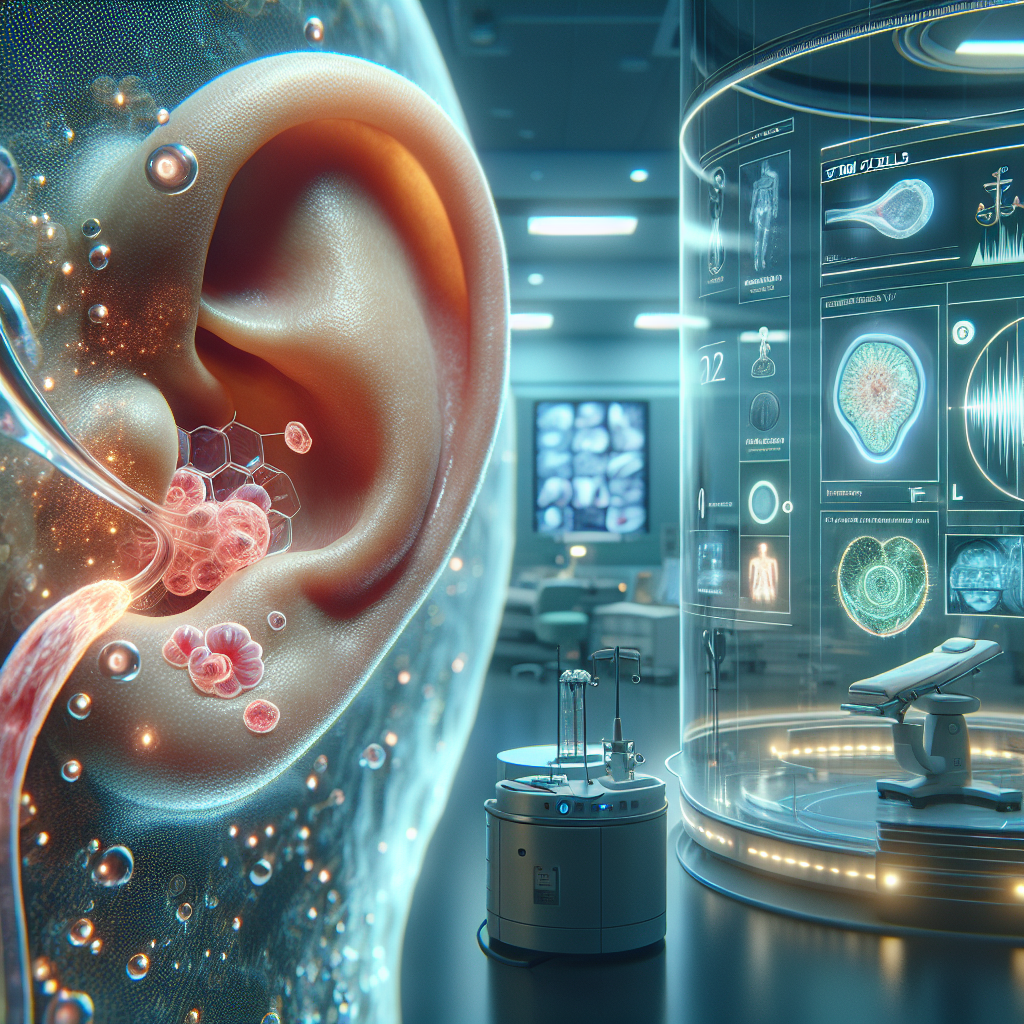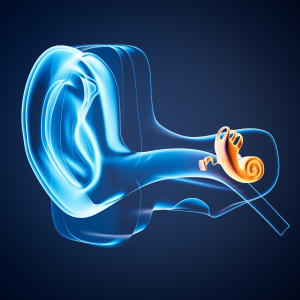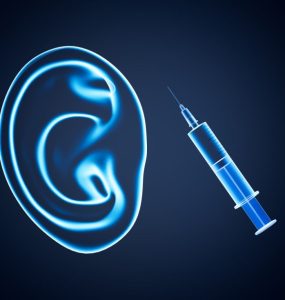
Stem Cell Treatment for Hearing Loss: Understanding Pathways & Options
Key Takeaways
- Understanding Sensorineural Hearing Loss: This guide explains the complexities of sensorineural hearing loss and why conventional treatments sometimes fall short.
- Emerging Pathways: Explore the potential of stem cell-based approaches for auditory nerve repair, cochlear regeneration, and hair cell replacement, understanding they are generally in early research stages.
- Ethical & Regulatory Considerations: Learn about the importance of ethical frameworks and regulatory oversight in the pursuit of innovative medical care, including in Colombia.
- The Pereira Advantage: Discover how the supportive medical environment, advanced infrastructure, and dedicated patient coordination in Pereira, Colombia, offer a distinct advantage for those exploring these innovative pathways.
- Informed Decision-Making: This resource empowers you with knowledge to critically evaluate options and prepare for a confidential discussion about your specific situation.
Introduction: Navigating the Search for Auditory Clarity
The journey to addressing hearing loss is deeply personal and often begins with a profound sense of isolation and frustration. For many, conventional options like hearing aids or cochlear implants offer significant support, yet for those with complex or profound sensorineural hearing loss, the search for more fundamental solutions continues. You might be grappling with questions about what’s next, what truly innovative possibilities exist, and where to find ethical, knowledgeable guidance.
This guide is designed to serve as a strategic educational resource for individuals exploring advanced pathways, specifically focusing on the emerging field of stem cell treatment for hearing loss. Our aim is to demystify complex concepts like auditory nerve repair, cochlear regeneration, and hair cell replacement, offering a clear, source-verified perspective on the current landscape. We understand the weight of these decisions and the desire for hope, which is why we approach this topic with empathy, precision, and an unwavering commitment to ethical communication.
We will explore the scientific concepts behind these innovative approaches, discuss the critical importance of regulatory oversight and patient safety, and transparently present the unique advantages of considering a destination like Pereira, Colombia, for such care. Our goal is not to assert unverified clinical superiority or guarantee outcomes, but to empower you with the information needed to make confident, informed choices on your path toward auditory clarity.
The Stakes: Understanding the Critical Implications of Hearing Loss

Hearing loss, particularly sensorineural hearing loss, is more than just a physical impairment; it can profoundly impact quality of life, communication, and overall well-being. According to the World Health Organization (WHO), over 1.5 billion people globally live with some degree of hearing loss, and by 2050, nearly 2.5 billion people are projected to have some degree of hearing loss, with at least 700 million requiring rehabilitation. The implications extend beyond individual experience, affecting social interaction, cognitive health, and economic participation.
What is Sensorineural Hearing Loss?
Sensorineural hearing loss occurs when there is damage to the inner ear (cochlea) or the nerve pathways from the inner ear to the brain. This damage can involve the delicate hair cells within the cochlea, which are responsible for converting sound vibrations into electrical signals, or the auditory nerve itself. Unlike conductive hearing loss, which often involves blockages or issues in the outer or middle ear, sensorineural loss is frequently permanent and can be caused by aging, noise exposure, genetics, infections, or certain medications. The U.S. National Institutes of Health (NIH) actively supports research into the underlying mechanisms of sensorineural hearing loss, seeking pathways for prevention and novel interventions.
The Search for Deeper Solutions
For many years, treatment for sensorineural hearing loss has focused on amplification and prosthetic devices. However, the prospect of biologically repairing or regenerating the damaged structures—such as auditory nerve repair, cochlear regeneration, or hair cell replacement—represents a significant area of research. These innovative concepts aim to address the root cause of the loss, moving beyond merely managing symptoms. While still largely in investigational phases, the potential for these areas to transform the landscape of hearing care is undeniable, driving significant scientific interest globally, as evidenced by numerous studies cataloged on PubMed and ClinicalTrials.gov.
The Conventional Approach to Hearing Loss in the USA

In countries like the USA, the standard of care for sensorineural hearing loss typically revolves around established and effective interventions, primarily aimed at improving sound perception and communication. The U.S. Food and Drug Administration (FDA) regulates hearing devices and certain medical treatments, ensuring they meet rigorous safety and efficacy standards before becoming widely available.
Current Treatments Include:
- Hearing Aids: Electronic devices that amplify sound, individually programmed to suit a person’s specific hearing loss profile. They are the most common intervention.
- Cochlear Implants: For individuals with severe to profound sensorineural hearing loss who receive limited benefit from hearing aids. These devices bypass damaged parts of the inner ear and directly stimulate the auditory nerve.
- Assistive Listening Devices: Technologies designed to improve hearing in specific situations, such as personal amplifiers, captioning services, and alerting devices.
While these conventional approaches have significantly improved the lives of millions, they often do not restore natural hearing or repair the underlying cellular damage. This limitation is a key driver for individuals and researchers alike to explore innovative and regenerative pathways, which, while promising, remain areas of ongoing scientific investigation and development.
The Pereira, Colombia Advantage: A New Horizon for Innovative Care

When exploring innovative medical pathways, the choice of location for care extends beyond just the treatment itself. It encompasses the entire patient journey—from the medical infrastructure and regulatory environment to the supportive ecosystem and quality of life during recuperation. Pereira, Colombia, has emerged as a compelling destination for those seeking advanced medical care, offering a unique blend of factors that contribute to a comprehensive and compassionate patient experience.
Robust Healthcare Infrastructure and Expertise
Colombia has made significant strides in developing a sophisticated healthcare system, with specific cities like Pereira boasting state-of-the-art medical facilities. The Ministry of Health and Social Protection of Colombia, along with its regulatory agency INVIMA, oversees the quality and safety of medical services and products, ensuring compliance with national and international standards. Many medical professionals in Colombia receive training that meets international benchmarks, and facilities often feature advanced diagnostic and treatment technologies.
One profound synthetic contextual insight we’ve observed is that the journey to regaining auditory clarity often begins with a profound sense of isolation, as conventional options may not address the underlying cellular damage. Patients are actively seeking advancements that offer more than symptom management, exploring pathways that could truly regenerate. This drives the exploration of destinations like Pereira, where innovation is coupled with a highly skilled medical community.
The Patient Journey: Designed for Clarity and Comfort
Navigating international medical options requires not just clinical excellence but also a supportive ecosystem. Patients find immense value in a destination like Pereira, which combines accessible, high-standard medical facilities with a peaceful recuperative environment and a dedicated patient support structure that demystifies the entire process. The Regencord team in Pereira, Colombia, understands that the journey for those considering innovative pathways for conditions like sensorineural hearing loss is multifaceted.
- Dedicated Patient Advocacy: From initial inquiry to post-procedure support, a dedicated team assists with all logistical aspects, including travel, accommodation, translation, and local transportation. This comprehensive support helps alleviate the anxieties often associated with international travel for medical reasons.
- Holistic Care Environment: Pereira, nestled in Colombia’s picturesque Coffee Axis, offers a tranquil and restorative setting conducive to healing. The region’s natural beauty, mild climate, and warm culture contribute positively to a patient’s emotional and physical well-being.
- Focus on Education and Transparency: The team prioritizes clear, ethical communication, ensuring patients receive comprehensive information about the investigative nature of certain pathways for auditory nerve repair, cochlear regeneration, or hair cell replacement, allowing for truly informed decisions.
- Value and Accessibility: While maintaining high standards, the cost of advanced medical care in Colombia can be more competitive compared to the USA, without compromising on quality or safety.
Choosing to explore innovative pathways for stem cell treatment for hearing loss in Pereira means choosing a place where advanced medical capabilities meet compassionate, structured patient care, ensuring a supported experience every step of the way.
Your Hearing Clarity Pathway Checklist

Navigating the complex world of innovative medical options for conditions like sensorineural hearing loss requires a structured approach. To assist you in this crucial journey, we’ve developed “The Hearing Clarity Pathway Checklist.” This practical resource is designed to help you organize your thoughts, gather essential information, and prepare for informed discussions about potential pathways, including those exploring auditory nerve repair and cochlear regeneration.
How to Use The Hearing Clarity Pathway Checklist:
- Understand Your Diagnosis:
- Have I received a clear diagnosis of my hearing loss type (e.g., sensorineural)?
- Do I have recent audiograms and other relevant medical records?
- Am I aware of the specific structures affected (e.g., hair cells, auditory nerve)?
- Research & Information Gathering:
- Have I read reliable, source-verified information on stem cell-based approaches for hearing loss (e.g., from NIH, PubMed)?
- Do I understand that these are often innovative or investigational pathways and not universally approved treatments?
- Have I identified my core questions and concerns regarding these options?
- Evaluate Potential Providers:
- What are the accreditations and regulatory oversight of the medical facility (e.g., INVIMA in Colombia)?
- Does the provider offer transparent information about their processes, patient journey, and safety protocols?
- Is there a dedicated patient advocacy or coordination team to assist with logistics?
- Logistical & Personal Preparedness:
- Have I considered the travel requirements and duration of stay for international care?
- What support systems will I need during my medical journey (e.g., language assistance, accommodation)?
- Am I prepared for a comprehensive case review to determine suitability for specific pathways?
- Decision-Making & Communication:
- Am I clear on my personal goals for exploring innovative hearing loss solutions?
- Am I ready to engage in an open, honest discussion with medical communicators about expectations and realities?
- Do I feel empowered to make a decision based on clear, factual information and ethical guidance?
Using The Hearing Clarity Pathway Checklist can provide a structured framework, transforming what can feel like an overwhelming process into a series of manageable steps, empowering you toward a confident and informed decision.
Our Regenerative Philosophy & Approach: An Educational Perspective
At Regencord in Pereira, Colombia, our philosophy is rooted in education, patient empowerment, and the ethical exploration of innovative pathways. While we strictly adhere to the principle of not making unverified clinical claims or guaranteeing outcomes, we believe in transparently presenting the scientific advancements and possibilities within regenerative medicine, particularly for conditions like sensorineural hearing loss.
Understanding the Promise of Regenerative Pathways
The field of regenerative medicine aims to repair, replace, or regenerate damaged tissues and organs. For hearing loss, this includes exploring how stem cells might contribute to:
- Auditory Nerve Repair: Investigating methods to restore function to the damaged auditory nerve, which transmits sound signals from the cochlea to the brain. Research in this area is complex and targets the delicate neural connections essential for hearing.
- Cochlear Regeneration: Focusing on repairing or rebuilding parts of the cochlea, the snail-shaped organ in the inner ear that contains the sensory hair cells.
- Hair Cell Replacement: The delicate hair cells within the cochlea are crucial for hearing. Their loss is a primary cause of sensorineural hearing loss. Researchers are exploring ways to replace or stimulate the regeneration of these cells, often through stem cell-based approaches. Studies highlighted by the NIH consistently show ongoing research into these mechanisms, moving from preclinical models to early-phase human investigations.
Our approach is to facilitate access to care within a framework that prioritizes patient safety, ethical practice, and adherence to Colombian regulatory standards, as overseen by INVIMA. We are focused on guiding patients through a journey where the potential of these innovative pathways is understood within its current scientific context.
Overcoming Common Hesitations: Why Seeking Clarity is a Strategic Advantage
Considering innovative medical pathways, especially in an international setting, naturally brings forth a range of questions and concerns. These hesitations are valid and deserve clear, empathetic responses. At Regencord, we believe that understanding and addressing these concerns transforms uncertainty into a strategic advantage, empowering you to make informed decisions.
1. “Is exploring stem cell treatment for hearing loss legitimate or safe?”
Addressing the Concern: This is a critical question, and it’s essential to differentiate between established treatments and innovative pathways still under investigation. The legitimacy of any medical intervention, particularly in the realm of regenerative medicine, rests on adherence to ethical frameworks, rigorous scientific principles, and robust regulatory oversight. In Colombia, health authorities like the Ministry of Health and INVIMA enforce strict guidelines for medical facilities and treatments. Exploring innovative pathways for auditory nerve repair or cochlear regeneration through legitimate, accredited facilities means engaging with processes that prioritize patient safety and adhere to these regulations. It’s about seeking clarity on the specific research protocols and understanding that innovation is a journey, not always a guaranteed outcome, but one that is managed with the utmost care for patient well-being.
2. “Colombia? Is the medical care of high enough standard for something this important?”
Addressing the Concern: It’s natural to have questions about international medical standards. Colombia has invested significantly in its healthcare infrastructure, and cities like Pereira boast modern hospitals and clinics equipped with advanced technology. Many Colombian medical professionals receive internationally recognized training and participate in ongoing education. The Pan American Health Organization (PAHO) often highlights the advancements in healthcare systems across Latin America, including Colombia, emphasizing continuous improvement in quality and accessibility. Furthermore, medical facilities in Colombia often undergo accreditations to meet or exceed national and international standards, ensuring a commitment to high-quality care. The focus is on verifiable facts: robust infrastructure, specific governmental accreditations (like those from INVIMA), and high standards of medical training, which collectively demonstrate a well-regulated and capable medical system.
3. “This sounds incredibly complex and overwhelming. I wouldn’t know where to start.”
Addressing the Concern: The thought of navigating a new medical journey in a different country can indeed feel daunting. That’s precisely why a dedicated patient advocacy team is invaluable. Our approach transforms the perception of a complex process into a manageable, supported pathway. From your initial inquiry, through travel planning, accommodation, appointments, and even post-care support, the Regencord team in Pereira, Colombia, provides comprehensive coordination. This step-by-step guidance ensures that language barriers, logistical challenges, and administrative tasks are handled for you, allowing you to focus on your health and well-being. This direct addressing of logistical anxiety, by outlining a clear, supported journey, is a cornerstone of our patient-centric approach.
4. “What about the cost? Is it truly accessible without compromising quality?”
Addressing the Concern: Cost is a significant factor in any medical decision. While innovative pathways can involve substantial investment, many find that the overall value proposition in destinations like Pereira, Colombia, is compelling. This is not about cutting corners but about a different economic landscape and healthcare delivery model that can offer high-quality care at a more competitive cost compared to certain markets like the USA. The transparent pricing, combined with a comprehensive support system that minimizes hidden expenses, ensures that you can pursue advanced options without undue financial stress. The focus is on providing a clear, itemized understanding of costs upfront, allowing for a strategic evaluation of the value received.
By proactively addressing these common concerns with clarity, verifiable facts, and a commitment to patient support, we aim to empower you to approach the possibility of innovative pathways for stem cell treatment for hearing loss with confidence and a clear path forward.
Glossary of Key Terms
- Auditory Nerve Repair
- Investigative approaches focused on restoring or improving the function of the auditory nerve, which transmits sound signals from the inner ear to the brain.
- Cochlea
- A spiral-shaped cavity of the inner ear that contains the organ of Corti, which produces nerve impulses in response to sound vibrations.
- Cochlear Regeneration
- Research and potential methods aimed at repairing or rebuilding damaged structures within the cochlea, including hair cells and supporting cells.
- Hair Cells
- Sensory cells in the inner ear’s cochlea that convert sound vibrations into electrical signals, crucial for hearing. Damage or loss of these cells is a common cause of sensorineural hearing loss.
- INVIMA
- The National Institute of Food and Drug Surveillance (Instituto Nacional de Vigilancia de Medicamentos y Alimentos), the regulatory agency of Colombia responsible for overseeing the safety and quality of medical devices, medications, and health services.
- Regenerative Medicine
- A broad field of medical science focused on developing methods to regrow, repair or replace damaged or diseased cells, organs or tissues.
- Sensorineural Hearing Loss
- Hearing loss caused by damage to the inner ear (cochlea) or the nerve pathways from the inner ear to the brain, often permanent.
- Stem Cells
- Undifferentiated cells that have the ability to self-renew and differentiate into specialized cell types, holding promise for tissue repair and regeneration.
Frequently Asked Questions (FAQ)
What is the current status of stem cell treatment for hearing loss?
Stem cell treatment for hearing loss, including approaches for auditory nerve repair, cochlear regeneration, and hair cell replacement, is primarily an area of active scientific research. While preclinical studies and early-phase human trials show promise, these are generally considered innovative or investigational pathways and are not yet universally approved as standard clinical treatments. It’s crucial to understand the research context when evaluating options.
Are there specific types of hearing loss that stem cell approaches target?
Most research on stem cell approaches for hearing loss focuses on sensorineural hearing loss, which involves damage to the inner ear structures or the auditory nerve. This includes conditions where hair cells are lost or the auditory nerve is damaged. The goal is to regenerate or repair these specific cellular components.
Why consider Pereira, Colombia, for these innovative pathways?
Pereira, Colombia, offers a blend of advanced medical infrastructure, highly trained professionals, and a robust regulatory environment (overseen by INVIMA) for ethical and safe medical practice. Beyond the clinical aspects, the city provides a peaceful recuperative environment and comprehensive patient coordination services, making the international medical journey less stressful and more accessible for those exploring innovative options.
What kind of support can I expect if I choose to explore options through Regencord?
The Regencord team provides extensive patient advocacy and coordination. This includes assistance with understanding your case, travel arrangements, local logistics (accommodation, transportation), language support, and guidance through the entire process, ensuring a smooth and transparent experience. Our goal is to empower you with clear information and seamless support.
How do I know if I might be a candidate for these innovative pathways?
Determining candidacy for innovative pathways requires a comprehensive review of your medical history, diagnosis, and current health status. It involves a confidential case review with medical communicators to understand your specific situation and discuss if these investigational approaches align with your needs and the current scientific understanding. This review is a critical first step to ensure ethical and appropriate guidance.
Your Path to Informed Decisions Starts Here
The journey to understanding innovative options for conditions like sensorineural hearing loss can feel vast. Our mission is to illuminate that path with clarity, ethical guidance, and comprehensive support.
Discover if you are a candidate for the regenerative medicine pathways available through the team at Regencord in Pereira, Colombia. Explore the possibilities of auditory nerve repair, cochlear regeneration, and hair cell replacement within a supported, ethical framework. Your questions deserve knowledgeable, compassionate answers.



